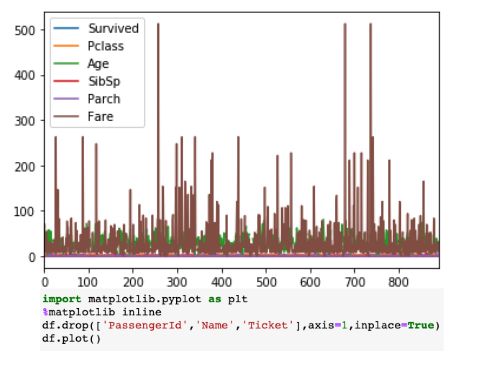- 全平台QQ聊天数据库解密项目常见问题解决方案
管旭韶
全平台QQ聊天数据库解密项目常见问题解决方案qq-win-db-keyQQNT/WindowsQQ聊天数据库解密项目地址:https://gitcode.com/gh_mirrors/qq/qq-win-db-key项目基础介绍本项目是一个开源项目,旨在为用户提供全平台QQ聊天数据库的解密方法。项目主要使用Python、JavaScript和C++等编程语言实现。新手常见问题及解决步骤问题一:如何
- 用鸿蒙打造真正的跨设备数据库:从零实现分布式存储
网罗开发
HarmonyOS实战源码实战harmonyos数据库分布式
网罗开发(小红书、快手、视频号同名) 大家好,我是展菲,目前在上市企业从事人工智能项目研发管理工作,平时热衷于分享各种编程领域的软硬技能知识以及前沿技术,包括iOS、前端、HarmonyOS、Java、Python等方向。在移动端开发、鸿蒙开发、物联网、嵌入式、云原生、开源等领域有深厚造诣。图书作者:《ESP32-C3物联网工程开发实战》图书作者:《SwiftUI入门,进阶与实战》超级个体:CO
- Python Day58
别勉.
python机器学习python信息可视化数据分析
Task:1.时序建模的流程2.时序任务经典单变量数据集3.ARIMA(p,d,q)模型实战4.SARIMA摘要图的理解5.处理不平稳的2种差分a.n阶差分—处理趋势b.季节性差分—处理季节性建立一个ARIMA模型,通常遵循以下步骤:数据可视化:观察原始时间序列图,判断是否存在趋势或季节性。平稳性检验:对原始序列进行ADF检验。如果p值>0.05,说明序列非平稳,需要进行差分。确定差分次数d:进行
- Python Day56
别勉.
python机器学习python开发语言
Task:1.假设检验基础知识a.原假设与备择假设b.P值、统计量、显著水平、置信区间2.白噪声a.白噪声的定义b.自相关性检验:ACF检验和Ljung-Box检验c.偏自相关性检验:PACF检验3.平稳性a.平稳性的定义b.单位根检验4.季节性检验a.ACF检验b.序列分解:趋势+季节性+残差记忆口诀:p越小,落在置信区间外,越拒绝原假设。1.假设检验基础知识a.原假设与备择假设原假设(Null
- Python Day57
别勉.
python机器学习python开发语言
Task:1.序列数据的处理:a.处理非平稳性:n阶差分b.处理季节性:季节性差分c.自回归性无需处理2.模型的选择a.AR§自回归模型:当前值受到过去p个值的影响b.MA(q)移动平均模型:当前值收到短期冲击的影响,且冲击影响随时间衰减c.ARMA(p,q)自回归滑动平均模型:同时存在自回归和冲击影响时间序列分析:ARIMA/SARIMA模型构建流程时间序列分析的核心目标是理解序列的过去行为,并
- Python Day44
别勉.
python机器学习python开发语言
Task:1.预训练的概念2.常见的分类预训练模型3.图像预训练模型的发展史4.预训练的策略5.预训练代码实战:resnet181.预训练的概念预训练(Pre-training)是指在大规模数据集上,先训练模型以学习通用的特征表示,然后将其用于特定任务的微调。这种方法可以显著提高模型在目标任务上的性能,减少训练时间和所需数据量。核心思想:在大规模、通用的数据(如ImageNet)上训练模型,学习丰
- Python Day42
别勉.
python机器学习python开发语言
Task:Grad-CAM与Hook函数1.回调函数2.lambda函数3.hook函数的模块钩子和张量钩子4.Grad-CAM的示例1.回调函数定义:回调函数是作为参数传入到其他函数中的函数,在特定事件发生时被调用。特点:便于扩展和自定义程序行为。常用于训练过程中的监控、日志记录、模型保存等场景。示例:defcallback_function():print("Epochcompleted!")
- Python-什么是集合
難釋懷
python开发语言数据库
一、前言在Python中,除了我们常用的列表(list)、元组(tuple)和字典(dict),还有一种非常实用的数据结构——集合(set)。集合是一种无序且不重复的元素集合,常用于去重、交并差运算等场景。本文将带你全面了解Python中集合的基本用法、操作方法及其适用场景,并通过大量代码示例帮助你掌握这一重要数据类型。二、什么是集合(set)?✅定义:集合是Python中的一种可变数据类型,它存
- Python Day53
别勉.
python机器学习python开发语言
Task:1.对抗生成网络的思想:关注损失从何而来2.生成器、判别器3.nn.sequential容器:适合于按顺序运算的情况,简化前向传播写法4.leakyReLU介绍:避免relu的神经元失活现象1.对抗生成网络的思想:关注损失从何而来这是理解GANs的关键!传统的神经网络训练中,我们通常会直接定义一个损失函数(如均方误差MSE、交叉熵CE),然后通过反向传播来优化这个损失。这个损失的“来源”
- 〖Python零基础入门篇⑮〗- Python中的字典
哈哥撩编程
#①-零基础入门篇Python全栈白宝书python开发语言后端python中的字典
>【易编橙·终身成长社群,相遇已是上上签!】-点击跳转~<作者:哈哥撩编程(视频号同名)图书作者:程序员职场效能宝典博客专家:全国博客之星第四名超级个体:COC上海社区主理人特约讲师:谷歌亚马逊分享嘉宾科技博主:极星会首批签约作者文章目录⭐️什么是字典?⭐️字典的结构与创建方法⭐️字典支持的数据类型⭐️在列表与元组中如何定义字典
- python换行输出字典_Python基础入门:字符串和字典
weixin_39959236
python换行输出字典
10、字符串常用转义字符转义字符描述\\反斜杠符号\'单引号\"双引号\n换行\t横向制表符(TAB)\r回车三引号允许一个字符串跨多行,字符串中可以包含换行符、制表符以及其他特殊字符para_str="""这是一个多行字符串的实例多行字符串可以使用制表符TAB(\t)。也可以使用换行符[\n]。"""print(para_str)#这是一个多行字符串的实例#多行字符串可以使用制表符#TAB()。
- Python----Python中的集合及其常用方法
redrose2100
Pythonpython开发语言后端
【原文链接】1集合的定义和特点(1)集合是用花括号括起来的,集合的特点是元素没有顺序,元素具有唯一性,不能重复>>>a={1,2,3,4}>>>type(a)>>>a={1,2,3,1,2,3}>>>a{1,2,3}2集合的常用运算(1)集合元素没有顺序,所以不能像列表和元组那样用下标取值>>>a={1,2,3}>>>a[0]Traceback(mostrecentcalllast):File""
- langchain+langserver+langfuse整合streamlit构建基础智能体中心
Messi^
人工智能-大模型应用langchain人工智能
ServerApi******#!/usr/bin/python--coding:UTF-8--importuvicornfromfastapiimportFastAPIfrombaseimportFaissEnginefromlangserve.serverimportadd_routesfromlangchain_core.promptsimportPromptTemplatefromlang
- pycharm两种运行py之路径问题
hellopbc
software#pycharmpythonpycahrmpath
文章目录pycharm两种运行py之路径问题pycharm两种运行py之路径问题运行python代码在pycharm中有两种方式:一种是直接鼠标点击runxxx运行,还有一种是使用#In[]:点击该行左边的绿色三角形按钮运行有可能在pythonconsole窗口运行有可能在你当前运行文件的窗口(就是run之后产生的那个窗口)**问题:**你会发现,涉及到路径问题时(使用相对路径),可能在这两种运行
- Python元组的遍历
難釋懷
python前端linux
一、前言在Python中,元组(tuple)是一种非常基础且常用的数据结构,它与列表类似,都是有序的序列,但不同的是,元组是不可变的(immutable),一旦创建就不能修改。虽然元组不能被修改,但它支持高效的遍历操作,非常适合用于存储不会变化的数据集合。本文将系统性地介绍Python中元组的多种遍历方式,包括基本遍历、索引访问、元素解包、结合函数等,并结合大量代码示例帮助你掌握这一重要技能。二、
- Python集合生成式
一、前言在Python中,我们已经熟悉了列表生成式(ListComprehension),它为我们提供了一种简洁高效的方式来创建列表。而除了列表之外,Python还支持一种类似的语法结构来创建集合——集合生成式(SetComprehension)。集合生成式不仅可以帮助我们快速构造一个无序且不重复的集合,还能有效提升代码的可读性和执行效率。本文将带你全面了解:✅什么是集合生成式✅集合生成式的语法结
- Python开发从新手到专家:第三章 列表、元组和集合
caifox菜狐狸
Python开发从新手到专家python元素集合列表元组数据结构字典
在Python开发的旅程中,数据结构是每一位开发者必须掌握的核心知识。它们是构建程序的基石,决定了代码的效率、可读性和可维护性。本章将深入探讨Python中的三种基本数据结构:列表、元组和集合。这三种数据结构在实际开发中有着广泛的应用,从简单的数据存储到复杂的算法实现,它们都扮演着不可或缺的角色。无论你是刚刚接触Python的新手,还是希望进一步提升编程技能的开发者,本章都将是你的宝贵指南。我们将
- python入门之字典
二十四桥_
python入门python
文章目录一、字典定义二、字典插入三、字典删除四、字典修改五、字典查找六、字典遍历七、字典拆包一、字典定义#{}键值对各个键值对之间用逗号隔开#1.有数据的字典dict1={'name':'zmz','age':20,'gender':'boy'}print(dict1)#2.创建空字典dict2={}print(dict2)dict3=dict()print(dict3)二、字典插入dict1={
- python类的定义与使用
菜鸟驿站2020
python
class01.py代码如下classTicket():#类的名称首字母大写#在类里定义的变量称为属性,第一个属性必须是selfdef__init__(self,checi,fstation,tstation,fdate,ftime,ttime,notes):self.checi=checiself.fstation=fstationself.tstation=tstationself.fdate
- Python爬虫设置代理IP
菜鸟驿站2020
python
配置代理ipfrombs4importBeautifulSoupimportrequestsimportrandom#从ip代理网站获取ip列表defget_ip_list(url,headers):web_data=requests.get(url,headers=headers)soup=BeautifulSoup(web_data.text,'lxml')ips=soup.find_all(
- Tensorflow 回归模型 FLASK + DOCKER 部署 至 Ubuntu 虚拟机
准备工作:安装虚拟机,安装ubuntu,安装python3.x、pip和对应版本的tensorflow和其他库文件,安装docker。注意事项:1.windows系统运行的模型文件不能直接运行到虚拟机上,需在虚拟机上重新运行并生成模型文件2.虚拟机网络状态改为桥接Flask代码如下:fromflaskimportFlask,request,jsonifyimportpickleimportnump
- 10个可以快速用Python进行数据分析的小技巧_python 通径分析
2401_86043917
python数据分析开发语言
df.iplot()df.iplot()vsdf.plot()右侧的可视
- 【Python多线程】
晟翰逸闻
Pythonpython
文章目录前言一、Python等待event.set二、pythonracecondition和lock使用使用锁(Lock)三.pythonDeadLock使用等综合运用总结前言这篇技术文章讨论了多线程编程中的几个重要概念。它首先介绍了等待事件的使用,并强调了避免使用“ForLoop&Sleep”进行等待的重要性。接着,文档解释了竞态条件,并提供了处理共享资源的建议,即在使用共享资源时进行加锁和解
- 【pycharm专业版】【如何远程配置Python解释器】【SSH】
资源存储库
pythonpycharm
Wejustlookedatconfiguringalocalinterpreter.Butwedon’talwayshavea“local”environment.Sometimes–andincreasinglyoften–ourenvironmentisoverthere.我们刚刚看了配置本地解释器。但我们并不总是有一个“本地”的环境。有时候–而且越来越多的时候–我们的环境就在那里。Let’
- python线程同步锁_python的Lock锁,线程同步
weixin_39649660
python线程同步锁
一、Lock锁凡是存在共享资源争抢的地方都可以使用锁,从而保证只有一个使用者可以完全使用这个资源一旦线程获得锁,其他试图获取锁的线程将被阻塞acquire(blocking=True,timeout=-1):默认阻塞,阻塞可以设置超时时间,非阻塞时,timeout禁止设置,成功获取锁,返回True,否则返回Falsereleas():释放锁,可以从任何线程调用释放,已上锁的锁,会被重置为unloc
- 并发与并行:python多线程详解
m_merlon
python服务器Python进阶教程python
简介多进程和多线程都可以执行多个任务,线程是进程的一部分。线程的特点是线程之间可以共享内存和变量,资源消耗少,缺点是线程之间的同步和加锁比较麻烦。在cpython中,截止到3.12为止依然存在全局解释器锁(GIL),不能发挥多核的优势,因此python多线程更适合IO密集型任务并发提高效率,CPU密集型任务推荐使用多进程并行解决。注:此说法仅适用于python(如:c++的多线程可以利用到多核并行
- python多线程:生产者与消费者,高级锁定Condition、queue队列使用案例与注意事项
网小鱼的学习笔记
Pythonpythonjava大数据
高级锁定这是python中的另一种中锁定,就像是它的名字一样是可以有条件的condition,首先程序使用acquire进入锁定状态,如果需要符合一定的条件才处理数据,此时可以调用wait,让自己进入睡眠状态,程序设计时候需要用notify通知其他线程,然后放弃锁定release此时其他再等待的线程因为受到通知notify,这时候被激活了,就开始运作。生产者与消费者的设计程序用producer方法
- python协程与异步并发,同步与阻塞,异步与非阻塞,Python异步IO、协程与同步原语介绍,协程的优势和劣势
网小鱼的学习笔记
Pythonpython服务器开发语言
协程与异步软件系统的并发使用异步IO,无非是我们提的软件系统的并发,这个软件系统,可以是网络爬虫,也可以是web服务等并发的方式有多种,多线程,多进程,异步IO等多线程和多进程更多应用于CPU密集型的场景,比如科学计算的事件都消耗在CPU上面,利用多核CPU来分担计算任务多线程和多进程之间的场景切换和通讯代价很高,不适合IO密集型的场景,而异步IO就是非常适合IO密集型的场景,例如网络爬虫和web
- 使用Python和FFmpeg实现RGB到YUV444的转换
追逐程序梦想者
ffmpegpython开发语言
使用Python和FFmpeg实现RGB到YUV444的转换如果你需要将RGB图像转换为YUV444格式的图像,那么本文将为你提供一个简单且可靠的方法。我们将使用Python和FFmpeg来完成这个任务。首先,让我们了解一下什么是RGB和YUV。RGB表示红、绿、蓝三种颜色的组合,是最常见的图像格式之一。另一方面,YUV是一种亮度-色度编码,用于视频压缩和传输,它将图像分成明亮度(Y)和色度(U和
- 如何利用ssh使得pycharm连接服务器的docker容器内部环境
SoulMatter
docker容器运维pycharmssh
如题,想要配置服务器的python编译器环境,来查看容器内部环境安装的包的情况。首先,需要确定容器的状态,使用dockerps查看,只有ports那一栏有内容才证明容器暴露了端口出来。如果没有暴露,就需要将容器打包成镜像,然后将镜像再启动一个容器才可以。步骤如下:如何打包镜像:(里面包括了将镜像从A服务器远程传输到B服务器后使用的方法,如果是在本服务器自己使用,那么忽略远程传输的步骤)#创建一个基
- mysql主从数据同步
林鹤霄
mysql主从数据同步
配置mysql5.5主从服务器(转)
教程开始:一、安装MySQL
说明:在两台MySQL服务器192.168.21.169和192.168.21.168上分别进行如下操作,安装MySQL 5.5.22
二、配置MySQL主服务器(192.168.21.169)mysql -uroot -p &nb
- oracle学习笔记
caoyong
oracle
1、ORACLE的安装
a>、ORACLE的版本
8i,9i : i是internet
10g,11g : grid (网格)
12c : cloud (云计算)
b>、10g不支持win7
&
- 数据库,SQL零基础入门
天子之骄
sql数据库入门基本术语
数据库,SQL零基础入门
做网站肯定离不开数据库,本人之前没怎么具体接触SQL,这几天起早贪黑得各种入门,恶补脑洞。一些具体的知识点,可以让小白不再迷茫的术语,拿来与大家分享。
数据库,永久数据的一个或多个大型结构化集合,通常与更新和查询数据的软件相关
- pom.xml
一炮送你回车库
pom.xml
1、一级元素dependencies是可以被子项目继承的
2、一级元素dependencyManagement是定义该项目群里jar包版本号的,通常和一级元素properties一起使用,既然有继承,也肯定有一级元素modules来定义子元素
3、父项目里的一级元素<modules>
<module>lcas-admin-war</module>
<
- sql查地区省市县
3213213333332132
sqlmysql
-- db_yhm_city
SELECT * FROM db_yhm_city WHERE class_parent_id = 1 -- 海南 class_id = 9 港、奥、台 class_id = 33、34、35
SELECT * FROM db_yhm_city WHERE class_parent_id =169
SELECT d1.cla
- 关于监听器那些让人头疼的事
宝剑锋梅花香
画图板监听器鼠标监听器
本人初学JAVA,对于界面开发我只能说有点蛋疼,用JAVA来做界面的话确实需要一定的耐心(不使用插件,就算使用插件的话也没好多少)既然Java提供了界面开发,老师又要求做,只能硬着头皮上啦。但是监听器还真是个难懂的地方,我是上了几次课才略微搞懂了些。
- JAVA的遍历MAP
darkranger
map
Java Map遍历方式的选择
1. 阐述
对于Java中Map的遍历方式,很多文章都推荐使用entrySet,认为其比keySet的效率高很多。理由是:entrySet方法一次拿到所有key和value的集合;而keySet拿到的只是key的集合,针对每个key,都要去Map中额外查找一次value,从而降低了总体效率。那么实际情况如何呢?
为了解遍历性能的真实差距,包括在遍历ke
- POJ 2312 Battle City 优先多列+bfs
aijuans
搜索
来源:http://poj.org/problem?id=2312
题意:题目背景就是小时候玩的坦克大战,求从起点到终点最少需要多少步。已知S和R是不能走得,E是空的,可以走,B是砖,只有打掉后才可以通过。
思路:很容易看出来这是一道广搜的题目,但是因为走E和走B所需要的时间不一样,因此不能用普通的队列存点。因为对于走B来说,要先打掉砖才能通过,所以我们可以理解为走B需要两步,而走E是指需要1
- Hibernate与Jpa的关系,终于弄懂
avords
javaHibernate数据库jpa
我知道Jpa是一种规范,而Hibernate是它的一种实现。除了Hibernate,还有EclipseLink(曾经的toplink),OpenJPA等可供选择,所以使用Jpa的一个好处是,可以更换实现而不必改动太多代码。
在play中定义Model时,使用的是jpa的annotations,比如javax.persistence.Entity, Table, Column, OneToMany
- 酸爽的console.log
bee1314
console
在前端的开发中,console.log那是开发必备啊,简直直观。通过写小函数,组合大功能。更容易测试。但是在打版本时,就要删除console.log,打完版本进入开发状态又要添加,真不够爽。重复劳动太多。所以可以做些简单地封装,方便开发和上线。
/**
* log.js hufeng
* The safe wrapper for `console.xxx` functions
*
- 哈佛教授:穷人和过于忙碌的人有一个共同思维特质
bijian1013
时间管理励志人生穷人过于忙碌
一个跨学科团队今年完成了一项对资源稀缺状况下人的思维方式的研究,结论是:穷人和过于忙碌的人有一个共同思维特质,即注意力被稀缺资源过分占据,引起认知和判断力的全面下降。这项研究是心理学、行为经济学和政策研究学者协作的典范。
这个研究源于穆来纳森对自己拖延症的憎恨。他7岁从印度移民美国,很快就如鱼得水,哈佛毕业
- other operate
征客丶
OSosx
一、Mac Finder 设置排序方式,预览栏 在显示-》查看显示选项中
二、有时预览显示时,卡死在那,有可能是一些临时文件夹被删除了,如:/private/tmp[有待验证]
--------------------------------------------------------------------
若有其他凝问或文中有错误,请及时向我指出,
我好及时改正,同时也让我们一
- 【Scala五】分析Spark源代码总结的Scala语法三
bit1129
scala
1. If语句作为表达式
val properties = if (jobIdToActiveJob.contains(jobId)) {
jobIdToActiveJob(stage.jobId).properties
} else {
// this stage will be assigned to "default" po
- ZooKeeper 入门
BlueSkator
中间件zk
ZooKeeper是一个高可用的分布式数据管理与系统协调框架。基于对Paxos算法的实现,使该框架保证了分布式环境中数据的强一致性,也正是基于这样的特性,使得ZooKeeper解决很多分布式问题。网上对ZK的应用场景也有不少介绍,本文将结合作者身边的项目例子,系统地对ZK的应用场景进行一个分门归类的介绍。
值得注意的是,ZK并非天生就是为这些应用场景设计的,都是后来众多开发者根据其框架的特性,利
- MySQL取得当前时间的函数是什么 格式化日期的函数是什么
BreakingBad
mysqlDate
取得当前时间用 now() 就行。
在数据库中格式化时间 用DATE_FORMA T(date, format) .
根据格式串format 格式化日期或日期和时间值date,返回结果串。
可用DATE_FORMAT( ) 来格式化DATE 或DATETIME 值,以便得到所希望的格式。根据format字符串格式化date值:
%S, %s 两位数字形式的秒( 00,01,
- 读《研磨设计模式》-代码笔记-组合模式
bylijinnan
java设计模式
声明: 本文只为方便我个人查阅和理解,详细的分析以及源代码请移步 原作者的博客http://chjavach.iteye.com/
import java.util.ArrayList;
import java.util.List;
abstract class Component {
public abstract void printStruct(Str
- 4_JAVA+Oracle面试题(有答案)
chenke
oracle
基础测试题
卷面上不能出现任何的涂写文字,所有的答案要求写在答题纸上,考卷不得带走。
选择题
1、 What will happen when you attempt to compile and run the following code? (3)
public class Static {
static {
int x = 5; // 在static内有效
}
st
- 新一代工作流系统设计目标
comsci
工作算法脚本
用户只需要给工作流系统制定若干个需求,流程系统根据需求,并结合事先输入的组织机构和权限结构,调用若干算法,在流程展示版面上面显示出系统自动生成的流程图,然后由用户根据实际情况对该流程图进行微调,直到满意为止,流程在运行过程中,系统和用户可以根据情况对流程进行实时的调整,包括拓扑结构的调整,权限的调整,内置脚本的调整。。。。。
在这个设计中,最难的地方是系统根据什么来生成流
- oracle 行链接与行迁移
daizj
oracle行迁移
表里的一行对于一个数据块太大的情况有二种(一行在一个数据块里放不下)
第一种情况:
INSERT的时候,INSERT时候行的大小就超一个块的大小。Oracle把这行的数据存储在一连串的数据块里(Oracle Stores the data for the row in a chain of data blocks),这种情况称为行链接(Row Chain),一般不可避免(除非使用更大的数据
- [JShop]开源电子商务系统jshop的系统缓存实现
dinguangx
jshop电子商务
前言
jeeshop中通过SystemManager管理了大量的缓存数据,来提升系统的性能,但这些缓存数据全部都是存放于内存中的,无法满足特定场景的数据更新(如集群环境)。JShop对jeeshop的缓存机制进行了扩展,提供CacheProvider来辅助SystemManager管理这些缓存数据,通过CacheProvider,可以把缓存存放在内存,ehcache,redis,memcache
- 初三全学年难记忆单词
dcj3sjt126com
englishword
several 儿子;若干
shelf 架子
knowledge 知识;学问
librarian 图书管理员
abroad 到国外,在国外
surf 冲浪
wave 浪;波浪
twice 两次;两倍
describe 描写;叙述
especially 特别;尤其
attract 吸引
prize 奖品;奖赏
competition 比赛;竞争
event 大事;事件
O
- sphinx实践
dcj3sjt126com
sphinx
安装参考地址:http://briansnelson.com/How_to_install_Sphinx_on_Centos_Server
yum install sphinx
如果失败的话使用下面的方式安装
wget http://sphinxsearch.com/files/sphinx-2.2.9-1.rhel6.x86_64.rpm
yum loca
- JPA之JPQL(三)
frank1234
ormjpaJPQL
1 什么是JPQL
JPQL是Java Persistence Query Language的简称,可以看成是JPA中的HQL, JPQL支持各种复杂查询。
2 检索单个对象
@Test
public void querySingleObject1() {
Query query = em.createQuery("sele
- Remove Duplicates from Sorted Array II
hcx2013
remove
Follow up for "Remove Duplicates":What if duplicates are allowed at most twice?
For example,Given sorted array nums = [1,1,1,2,2,3],
Your function should return length
- Spring4新特性——Groovy Bean定义DSL
jinnianshilongnian
spring 4
Spring4新特性——泛型限定式依赖注入
Spring4新特性——核心容器的其他改进
Spring4新特性——Web开发的增强
Spring4新特性——集成Bean Validation 1.1(JSR-349)到SpringMVC
Spring4新特性——Groovy Bean定义DSL
Spring4新特性——更好的Java泛型操作API
Spring4新
- CentOS安装Mysql5.5
liuxingguome
centos
CentOS下以RPM方式安装MySQL5.5
首先卸载系统自带Mysql:
yum remove mysql mysql-server mysql-libs compat-mysql51
rm -rf /var/lib/mysql
rm /etc/my.cnf
查看是否还有mysql软件:
rpm -qa|grep mysql
去http://dev.mysql.c
- 第14章 工具函数(下)
onestopweb
函数
index.html
<!DOCTYPE html PUBLIC "-//W3C//DTD XHTML 1.0 Transitional//EN" "http://www.w3.org/TR/xhtml1/DTD/xhtml1-transitional.dtd">
<html xmlns="http://www.w3.org/
- POJ 1050
SaraWon
二维数组子矩阵最大和
POJ ACM第1050题的详细描述,请参照
http://acm.pku.edu.cn/JudgeOnline/problem?id=1050
题目意思:
给定包含有正负整型的二维数组,找出所有子矩阵的和的最大值。
如二维数组
0 -2 -7 0
9 2 -6 2
-4 1 -4 1
-1 8 0 -2
中和最大的子矩阵是
9 2
-4 1
-1 8
且最大和是15
- [5]设计模式——单例模式
tsface
java单例设计模式虚拟机
单例模式:保证一个类仅有一个实例,并提供一个访问它的全局访问点
安全的单例模式:
/*
* @(#)Singleton.java 2014-8-1
*
* Copyright 2014 XXXX, Inc. All rights reserved.
*/
package com.fiberhome.singleton;
- Java8全新打造,英语学习supertool
yangshangchuan
javasuperword闭包java8函数式编程
superword是一个Java实现的英文单词分析软件,主要研究英语单词音近形似转化规律、前缀后缀规律、词之间的相似性规律等等。Clean code、Fluent style、Java8 feature: Lambdas, Streams and Functional-style Programming。
升学考试、工作求职、充电提高,都少不了英语的身影,英语对我们来说实在太重要